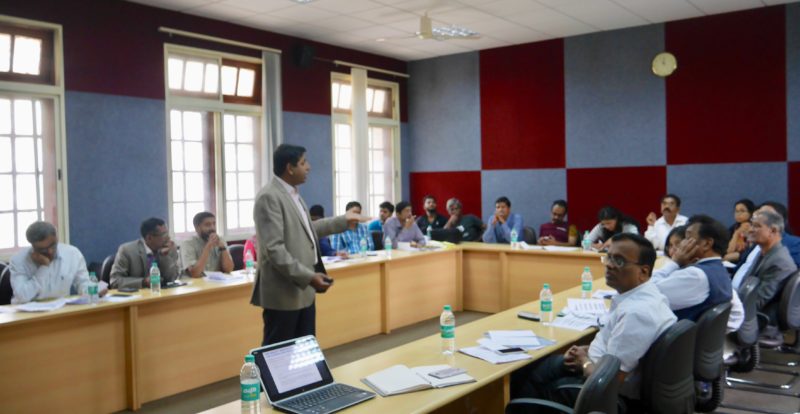Bangalore workshop takes place at the IISc
The Bangalore workshop was the first of four regional stakeholder workshops organised by Under Reform. The main purpose of this, and future, workshops, is to create a platform for learning about and discussion of urban governance reforms within the national Smart Cities Mission (SCM), particularly those related to transport.
On 5 September at the Indian Institute of Science (IISc), Bangalore, 31 participants from 19 organisations came together to discuss these issues. Those represented included government agencies, NGOs, urban local bodies, public transport organisations and smart city consultants.
The workshop facilitators began by introducing the project to stakeholders. Following this was an overview of the SCM, with insight into the scheme guidelines. Smart city consultants currently working with Smart Cities Mission for Bangalore also delivered a brief presentation.
Since the city was only shortlisted in the smart cities challenge very recently, the establishment of Special Purpose Vehicle (SPV) and other administrative works are still in the early stages. As the organisational structure is not in place it is still somewhat early to discuss how reforms have changed the working nature or approach of stakeholders involved in specific projects.
Stakeholder mapping
A stakeholder mapping exercise was conducted to identify key stakeholders and their organisational interactions. Our hope was that this would help in understanding the present governance structure in a more defined manner. Also, the stakeholder map would provide a comparable basis to understand the impact of the expected reforms under the SPV.
However, different interpretations among the stakeholders shed some light on an overall confusion about the creation of a city-level SPV. The theme permeating this discussion, and one that extended throughout the workshop, was concern for duplication among agencies. Several participants expressed frustration with an inability for existing agencies to coordinate and work together. A clear example was presented in the context of road construction, TenderSure projects and a failure to coordinate between agencies such as BBPV, BESCOM, and Bengaluru Traffic Police. This manifests as stagnation in the city’s already haphazard transport circulation. One participant asked what was preventing a simple solution such as putting up scheduled maintenance information online.
Discussion of issues
It was thought that lack of coordination and working together is due to institutional structures and arrangements as well as a lack of political will and impetus. The theme of institutional silos is of course not unique to Bangalore, but perhaps reflective of the relatively recent and uncertain transition to more urban oriented development in India.
Another concrete example developed through a discussion of the Director of Urban Land Transport—an agency with great technical capacity but no constitutional backing (e.g. no backing from any Act or Executive or Legistlative order). Many participants wondered why organisations such as UMTA and BMLTA were being created, as opposed to just strengthening DULT.
Stakeholders were curious to know more about the scheme and the integral governance reforms of the mission since there have been a lot of gaps in translation of the scheme from national level to the Urban Local Body (ULB) level. This may be due to the fact that the scheme’s approach is to strengthen the ULB by devolving decision-making authority to them, with respect to project selection and revenue mechanism. This is contrary to the conventional approach.
Further echoing the question of agency duplication was that of implementation—who would ultimately implement SPV projects and what would ultimately be implemented? Some participants from city agencies wanted to know about the technical capacity of members of the SPV and whether or not public participation would be part of the SPV. If so, who would be consulted and how would it be done?
Many participants felt that an SPV can be understood as a vehicle to bypass the current political stagnation. The question was whether or not there is a will to do so and what some of the implications of trying to bypass politics might be.
Future steps
At the same time as there is a lack of clarity about how the smart city reforms might work, there exist many opinions about what problems such reforms might address and which new issues they will create. In the course of this project, we hope to attain further insight into the smart cities mission implementation, using a bottom-up approach by conducting detailed face-to-face interviews with key stakeholders. This will help us understand the impact of smart cities reforms on overall governance structure in India. If you are in Bangalore and would like to learn more about this project, or be part of our stakeholder initiatives, please get in touch with a member of the Bangalore team via the team page.

